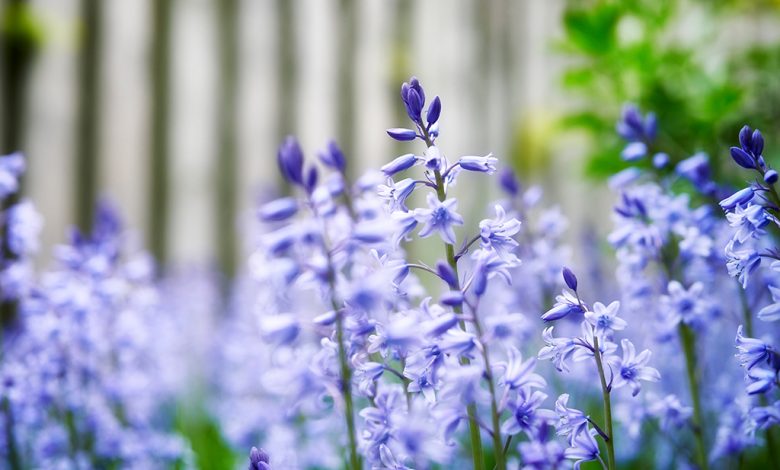Pet owners are being warned to avoid common poisonous plants their dogs may encounter while out on walkies.
Experts from Quotezone.co.uk are advising Brits to steer clear of dangerous plants which pose a significant threat to their four-legged friends.
Nature walks are a fantastic way to enjoy the great outdoors with dogs, however, it’s crucial to be aware there are several common plants that can be harmful to pets if ingested.
Innocent-looking plants, such as bluebells, hogweed and azaleas can lead to a range of health issues, from gastrointestinal distress to severe heart problems.
Dog owners are being urged to familiarise themselves with poisonous plants, keep their dogs on the lead and supervise their pets when venturing into nature.
Typical signs of poisoning for dogs include drooling, pale gums, lethargy, vomiting, diarrhoea, rash, and seizures.
Small dogs and puppies are at greater risk of getting poisoned because even if they ingest a small amount of a toxic plant, it can lead to significant harm.
If you suspect that your dog has eaten a toxic plant, it is essential to contact a veterinarian or animal poisoning hotline immediately to aid their recovery.
Pet insurance comparison expert at quotezone.co.uk, Helen Rolph said: “When out on walkies, whether it’s in a park, in the countryside or forest, it’s important to be vigilant and make sure that your dog doesn’t ingest anything toxic.
“Our four-legged friends are naturally curious, so it’s our responsibility to keep them safe from the potential dangers during outdoor adventures.
“Every dog owner should read up on the range of toxic plants for dogs that can be commonly encountered in their area, some are quite surprising.
“Although you may want to let your dog roam free, choose your off-lead spot wisely and if you’re unsure of any surrounding plants, best keep them on the lead.
“If you have any concerns about your furry friend, most pet insurance providers now have a 24/7 vet helpline – it’s worth checking if your insurance has this and storing the number in your phone in case of emergencies.”
The team at Quotezone.co.uk has compiled a checklist of seven common plants that are poisonous to dogs:
- Bluebells
Bluebells are considered poisonous to dogs because they contain toxic compounds known as glycosides. These toxins can be found throughout the plant, including the leaves, stems, flowers, and bulbs. Bluebells have a distinctive appearance, with violet bulbs and a narrow bell shape.
- Autumn crocus
Autumn crocuses are highly toxic to dogs due to the presence of colchicine which is extremely potent and can have severe and potentially lethal effects on dogs. Colchicine poisoning can occur when your dog ingests any part of the autumn crocus plant. Autumn crocuses have large, fragrant bulbs that are usually light pink or purple.
- Azalea
Azaleas contain grayanotoxins which can disturb the function of dogs’ nerve and muscle cells. The main symptoms of Azalea poisoning are abnormal heart rhythms, tremors, and low blood pressure. Azalea shrubs have colourful funnel-shaped flowers.
- Ivy
Ivy can be poisonous to dogs if ingested and can also cause a rash if it comes in contact with skin. This is because it contains toxic chemicals called saponins as well as polyacetylene compounds. Although the symptoms are usually not life-threatening, they can still cause serious health issues such as an upset stomach and skin and mouth irritation. Ivy has glossy, heart, or arrow-shaped leaves.
- Foxglove
Despite its beautiful appearance with colourful trumpet-shape blooms, you should never let your dog go near a foxglove plant. Foxglove is highly toxic to dogs, causing nausea, seizures, tremors, and can even lead to death. Fortunately, foxgloves are very tall, growing up to 5 feet, so they’re easy for dog owners to notice.
- Cotoneaster
Cotoneaster is a common evergreen shrub with bright red berries. Although cotoneaster is slightly poisonous to dogs, if they ingest a large quantity of cotoneaster berries or leaves then it can cause gastrointestinal issues such as severe stomach pain and diarrhoea.
- Giant hogweed
The most significant danger from giant hogweed comes from skin contact with the plant’s sap and subsequent exposure to sunlight, causing severe burns and blisters. If the sap gets into your dog’s eyes, it can even cause blindness. Giant hogweed has an umbrella-shaped head with white flowers and can grow up to almost 15 feet tall.






